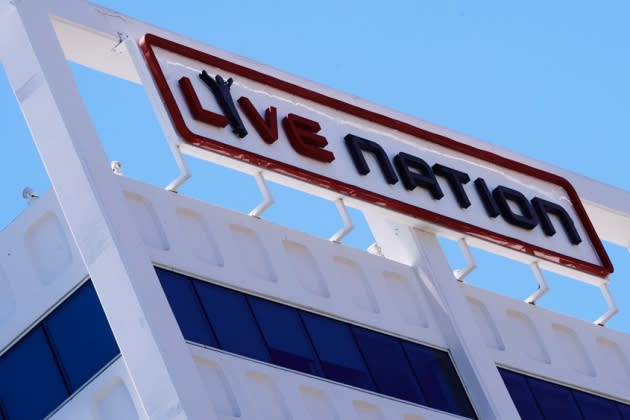Live Nation Posts Robust 2022 Second Quarter, Says It’s on Track for a Record Year

Live Nation posted solid results in its second quarter earnings report, with a 40% increase in revenue over the same period in 2019 to $4.4 billion, an 86% increase in operating income to $319 million, and a 50% increase in adjusted operating income $480 million.
Perhaps most significantly, “We have sold over 100 million tickets for our concerts this year — more than we sold for the entire year in 2019,” CEO Michael Rapino said in a statement, adding that the company is on track for a record year.
More from Variety
Wild Bruce Springsteen Ticket Prices Calm Down, but 'Dynamic Pricing' Storm Isn't Over
Live Nation Inks CEO Michael Rapino to New Five-Year, Multi-Million-Dollar Deal
Lizzo and Live Nation Donate $1 Million to Support Abortion-Rights Groups
Live Nation also posted what it said is its highest quarterly attendance ever, with more than 33 million fans across 12,500 events — up 20% over the same quarter in 2019.
Rapino said, “With most of the world fully re-opened, it’s clear that concerts remain a high priority for fans. Consumers are seeking out and spending more on experiences, and the growing demand we are seeing for live music and events is driving our business to record levels, far outpacing any macro issues or cost increases.”
However, while many blockbuster tours, such as Harry Styles and Olivia Rodrigo, are thriving, the high number of artists on the road, combined with recession fears and lingering apprehension about mass gatherings as Covid variants continue, has caused others to perform below expectations. Also, last week’s controversy over the high prices of many tickets for Bruce Springsteen’s 2023 tour were not a public relations boon for the company, which owns Ticketmaster, although it must be noted that the program could not have been instituted without the approval of the artist and the concerts’ promoters (Springsteen’s tour has multiple promoters).
High prices were noted in the earnings report, which reads in part, “Even as show count and attendance grew, fans demonstrated their willingness to pay more for the best seats, with the average price of a ticket for our concerts this year up 10% globally, relative to 2019, which remains largely in line with the U.S. inflation level over the period.” Although it notes, “At the same time, our average entry price for concerts remained affordable at $33, up only 5% from 2019,” it does reflect the dynamic pricing (i.e. rising with demand) of the “Platinum” tickets that caused the Springsteen controversy. “With market-based pricing being widely adopted by most tours, we expect to shift over $500 million from the secondary market to artists this year, continuing to support those who created the concert and ensuring they are benefiting from it.”
On that note, it continues that transacted fee-bearing ticket volume was up 48% to 77 million tickets, and gross transaction value was up 76% to $7.3 billion, both relative to Q2 2019 — the company’s highest fee-bearing quarter ever, with 75% of the growth came from concerts.
Along with the volume increase, transacted ticket pricing globally was up approximately 15% for the first half of the year relative to 2019, as both concerts and sporting events saw similar low double-digit price increases during this period. “Even with strong primary ticketing sales and increased pricing, demand for live events on our secondary ticketing marketplace remains high, and as a result, our GTV more than doubled for the quarter relative to Q2 2019.”
The report notes that of the over 6 million additional fans this quarter, 5 million of the growth came from international markets, driven by the addition of OCESA and the re-opening of most global markets, with particularly strong fan demand through Europe and Latin America.
It also states that the company has launched nearly 30 new venues across the globe. “We are seeing the benefit of operating more venues, as the number of fans who attended shows in our owned or operated venues during the quarter was up 13% to over 14 million fans, and we expect that figure to reach over 50 million fans for the full year.”
The report says that fans are spending more on-site, with average revenue per fan up over 20% at our amphitheaters, festivals and theaters and clubs relative to this time in 2019 while the average revenue per fan at our amphitheaters this year is $38.50, up 30% relative to this point in 2019.
Sponsorship saw 74% growth in revenue relative to Q2 2019, with festival sponsorship more than doubling from 2019, led by nine new festivals in its Mexico and Latin American businesses that accounted for roughly half this increase.
“As we prepare for 2023, everywhere globally is open for concerts, and we are actively routing into all markets with the largest artist pipeline we have ever seen at this point in the year,” Rapino’s statement concludes. “For the 2023 tours we have put on sale so far, all signs continue pointing to strong fan demand.”
Best of Variety
Sign up for Variety’s Newsletter. For the latest news, follow us on Facebook, Twitter, and Instagram.
